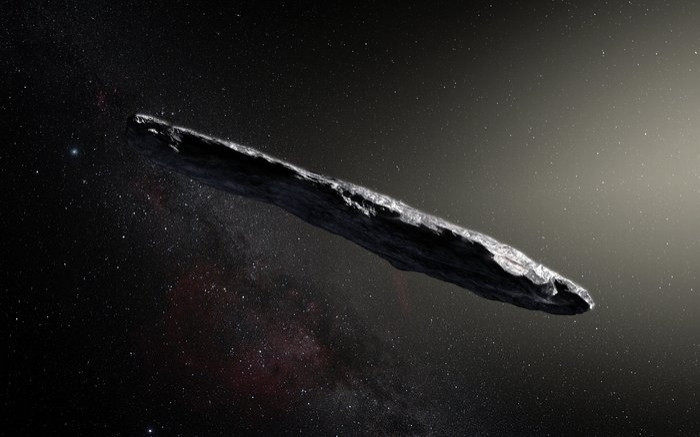Oumuamua was in a violent collision that set off a billion-year tumble before it reached the Solar System
It will eventually stop tumbling, but that is not likely to happen for millions of years.
The first recorded interstellar object to visit the Solar System, the cigar-shaped Oumuamua, met with a violent collision before it reached there. This is the reason for its rather odd tumbling roll.
Astronomers say that the roll will go on for millions of years till it crashes into something else, reports Science Alert. Since its discovery in October last year, Oumuamua has been the object of fascination and study for scientists around the world.
Apart from it being an interstellar traveller that is shaped like a cigar, the object's make-up was also a bit strange. Researchers have said the surface of the rock was made of a mushy carbon-enriched material so soft that if one were to stand on it, one's boots might actually sink by a few centimetres, reports Popular Science.
Its outer layer could have got its brownish red colour because of galactic radiation interacting with it, say researchers.
The Science Alert report notes that while the surface had a rocky and mushy coat, the core of the rock could have been icy, like a comet. While Oumuamua is now travelling far away towards the outer edges of the Solar System and it is unlikely to ever return, scientists have found that it definitely did have a violent past.
It has been travelling through space for possibly millions of years. Oumuamua is tumbling end over end as it moves forward. It is eight times as long as it is high, so a large object flipping over as it moves could have come only from a massive collision.
A team led by Wes Fraser from the Queen's University at Belfast has come up with an explanation for the roll and tumble that Oumuamua has as it travels through the galaxy. The team studied the movement of Oumuamua using all the optical photometry available and worked out that it is "tumbling chaotically".
Movement like this has been noted in smaller objects on a scale that is much smaller than what was seen with Oumuamua. Among the possible reasons for this type of movement, say researchers, are tidal torques caused by close encounters with planets, comet activity, and something called the Yarkovsky-O'Keefe-Radzievskii-Paddack effect caused by solar radiation interfering with the object's internal thermal activity.
While these are all possibilities, "at some point or another it's been in a collision", said Fraser. The tumbling will, however, eventually slow down and even stop because stresses and strains from within its body will cause it to stabilise. It is a slow process and is likely to take more than a billion years before it stops tumbling.
As to when it started tumbling, Fraser said: "It's hard to know if it was during planet formation or after the planet formation process."
"Certainly, more collisions happen while planets are growing than afterwards, so that's a very good guess. But unfortunately we can't get a high-resolution image of this thing to see what kind of crater is on it that might be attributed to the collision that caused it to start tumbling."
The object is due to reach Jovian orbit in May and Saturn by January next year.






















